While Hexclad is likely more durable, there’s no comparison between Caraway Home and Hexclad cookware when it comes forever chemicals. One is made with toxic materials and one isn’t. Here’s a head to head of Caraway vs. Hexclad.
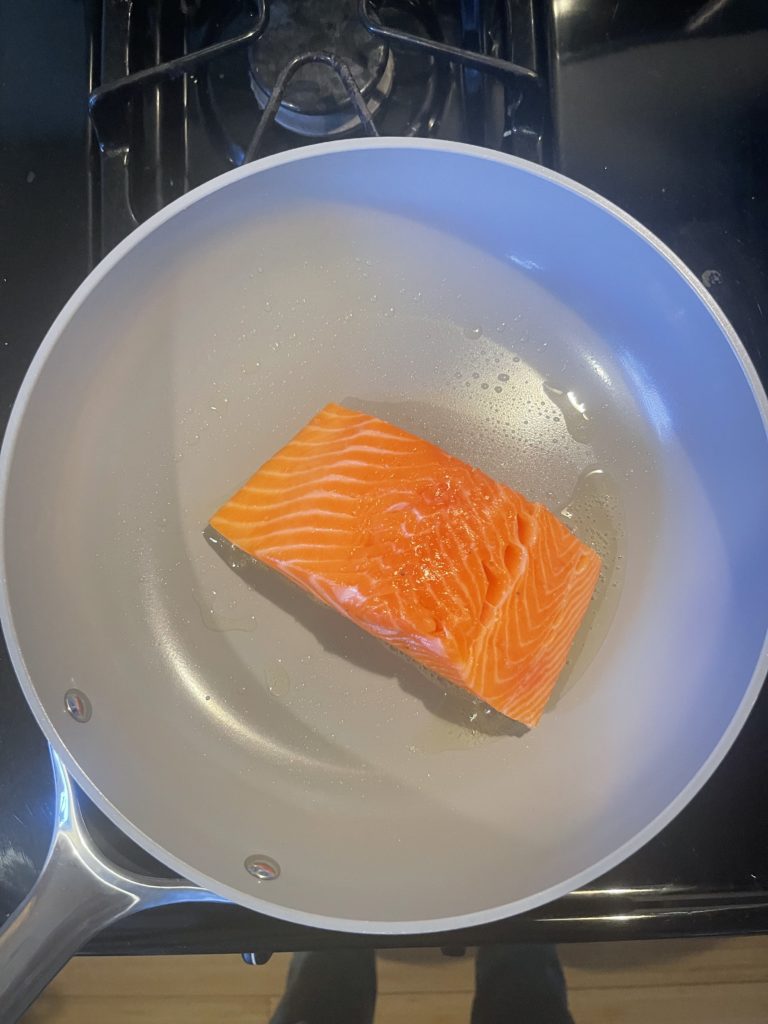
Hexclad is a popular cookware brand with a lot of marketing heft. It’s more widely available than Caraway Home cookware, which is a smaller brand, beloved of influencers. Readers have written in asking our take on Hexclad, which is why the brand has been mentioned on our site as of late.
Both companies make non-stick cookware. And as of 2024, both use a non-stick ceramic coating instead of PTFE.
It might take a while to work that out though, given Hexclad’s quiet shift away from its PTFE coating to a proprietary ceramic non-stick material. For years, Hexclad has marketed its pans as an upgraded and non-toxic version of standard non-stick PTFE pots and pans. As of 2024, Hexclad ditched the PTFE, though all of its marketing claims remain the same.
Let’s dig into the differences between Hexclad and Caraway Home.
Head to head: Caraway vs. Hexclad
| Caraway Home | Hexclad | |
|---|---|---|
| Materials | Aluminum core, stainless steel base for induction compatibility | Aluminum core, stainless steel above and below, TERRABOND Ceramic surface |
| Handles | Stainless steel, stay-cool | Stainless steel, stay-cool |
| Helper handles | Yes | Some designs |
| Non-stick coating | Sol-gel process ceramic | HEXCLAD TERRABOND™ ceramic coating with stainless steel lattice |
| Lids | Coated aluminum | Glass and stainless steel |
| Third-party testing available | Yes | No |
| Free from | PFOA, PTFE, other PFAS, hard anodization (and potentially toxic manufacturing byproducts) | No claims made |
| Leach testing results | No lead, cadmium, titanium, or other heavy metal leaching | Not available |
| Made in | China – likely in BSCI / SMETA certified factories | China |
| Oven safe | Yes, to 550 F, according to Caraway | Yes, according to Hexclad, up to 500 F |
| Induction compatible | Yes | Yes |
| Dishwasher safe | No | Yes, according to Hexclad, though this can damage ceramic coatings |
| Color options | 11 for main cookware collection | One |
| Price for 8-inch fry pan | $90 | $140-$160 |
| Warranty | 1-year warranty for major damage to the body, handles, lids or functional impairment | Lifetime warranty (but not for the non-stick surface) |
| Packaging | Smart and sustainable | Unknown |
| Sustainability initiatives | Uses recycled materials and sustainable packaging, offers help finding recycling options | None known |
What’s the same
Both Caraway Home and Hexclad offer non-stick cookware that’s technically oven-safe and induction compatible in a range of sizes. Both types of cookware are made in China.
And both sets of pans now boast a ceramic non-stick coating.
What’s different
Pan construction
Caraway Home cookware comprises ceramic coated aluminum with a steel base for induction compatibility.
Hexclad cookware comprises an aluminum core sandwiched between layers of stainless steel with a ceramic non-stick coating and stainless steel lattice over top. This type of construction makes the Hexclad pans heftier and arguably more robust than Caraway Home cookware.
So, if you tend to bang your pots and pans about, and only have room to stack pans on top of each other, Hexclad can look attractive.
That said, Caraway Home offers smart storage solutions that minimize cupboard room requirements while protecting the pans. And if you follow use guidelines for Caraway Home, meaning no metal utensils, temperature shocks, or cleaning with the dishwasher or steel wool, it should last a long time.
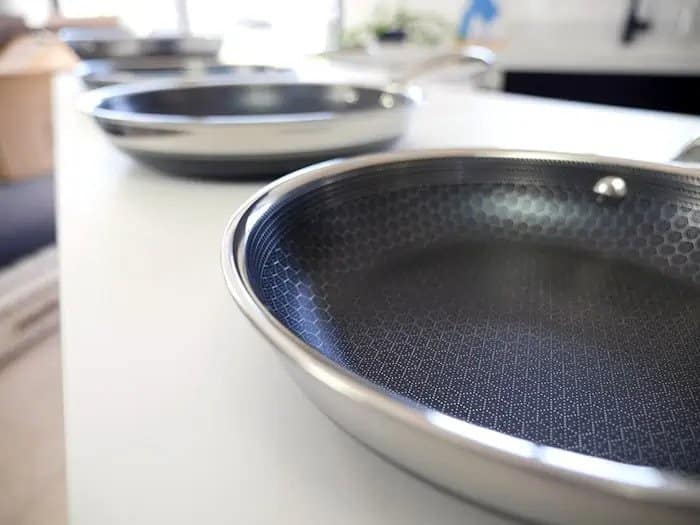
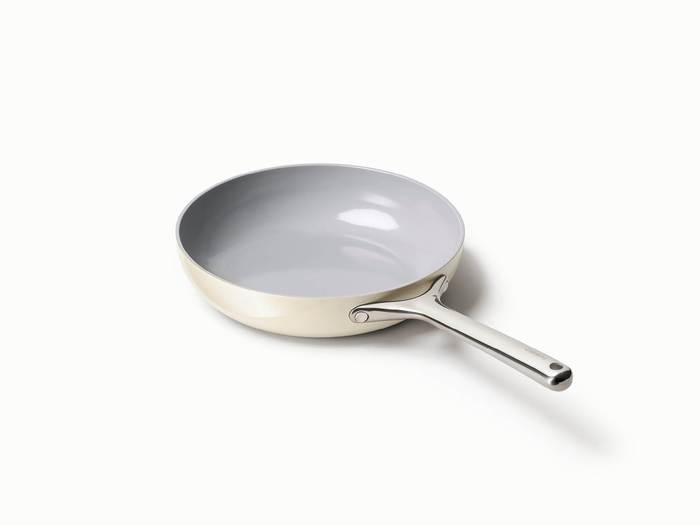
Non-stick surface
The Hexclad lattice overlay means that these pans don’t have a smooth surface, unlike the Caraway Home cookware. The honeycomb pattern of the Hexclad pans holds oil and juices to help stop food sticking, but it’s not great for frying eggs, fish, or other delicate items. Many customers complain about this non-stick cookware not actually being non-stick, with a good chance you’ll lose the sear or fond of many foods when you scrape them off the pan.
As long as you use a bit of oil with Caraway Home cookware, you can easily fry eggs, fish, medium soft tofu, and other more delicate foods and then flip these into a pan without losing any of the flavor.
Induction stovetop compatibility
Caraway Home cookware is designed to work with induction stovetops. Note, though, that the company has found some induction cooktops can be finicky and may not recognize its pots and pans.
For best performance, your induction cooktop will need an 8-inch and a 6-inch burner for the Caraway cookware (5.5-inch Sauce Pan, 6-inch Fry Pan, 6.5-inch Dutch Oven, and 8-inch Sauté Pan) to work.
Hexclad pans are also induction compatible thanks to the stainless steel construction and magnetized base. The stainless steel lattice will also heat up on induction, so be careful to heat on low and increase the temperature if necessary. Now the pans are made with ceramic coating, it’s even more important to heat them slowly as ceramic can crack with sudden increases (or decreases) in temperature.
Oven temperature
All Caraway Home cookware is oven safe to 550 F. Hexclad no longer gives guidance on safe oven use, though its marketing still says the ceramic coated pans are oven-safe. Personally, I wouldn’t use the Hexclad ceramic pans in the oven because the chances of the lattice expanding at a different rate to the ceramic coating seem very high. That could mean the ceramic cracks or that the latticework loosens, or that food or grease gets between the lattice and the ceramic coating.
All of these would affect the function of the pan and its longevity.
If you have a pre-2024 Hexclad PTFE pan, I would not recommend using this in the oven, because PTFE begins to break down at temperatures approaching 500 F. This can release toxic fumes and degrade the non-stick coating. Even reaching this temperature once can wreck a pan and mean it releases fumes every time you use it after.
It’s all too easy to reach 500 F when cooking. Even getting a sear on a steak on the stovetop can mean cooking with a pan that’s well over 500 F.
Durability
Caraway Home cookware is not dishwasher safe and you definitely don’t want to use metal utensils or scourers on the ceramic surface. Once the surface is chipped or scratched to any significant degree, you’re at risk of exposing yourself to aluminum. This is a big drawback of Caraway Home cookware, and why we wish the company made 3-ply stainless steel cookware instead.
In contrast, Hexclad is marketed as being dishwasher safe and is more robust overall, thanks to its 3-ply construction. You can also use metal utensils and (so the brand says) steel wool with Hexclad pans. It’s still best to avoid using pointy metal implements, though, as these can scratch the PTFE underneath the stainless steel lattice.
Now the pans are made with ceramic coating and not PTFE, I would be even more wary of the continued use of these claims by Hexclad. Ceramic is far less resistant to scratching and not typically safe for the dishwasher.
Frankly, I think Hexclad is either guilty of laziness in its marketing or of being disingenuous. PTFE and ceramic are not the same.
Regardless of whether you have an original PTFE Hexclad pan or a newer ceramic coated one, like Caraway Home cookware, the durability of the so-called indestructible Hexclad pans rests on proper use. And Hexclad isn’t properly informing its customers of how to use the updated cookware.
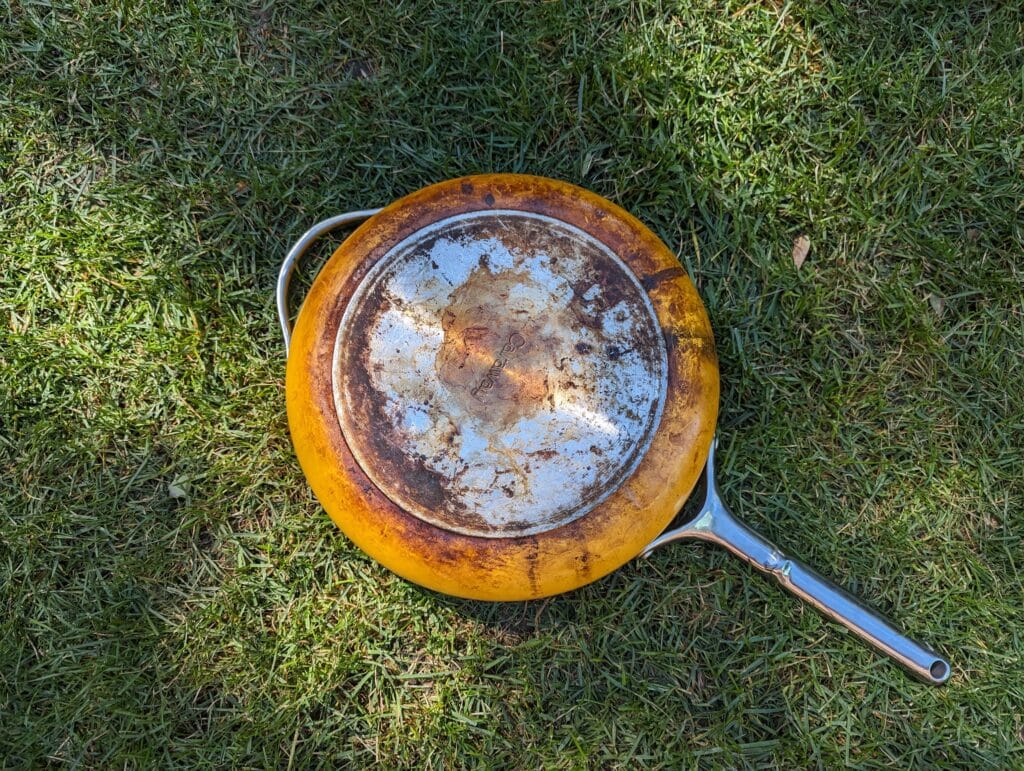
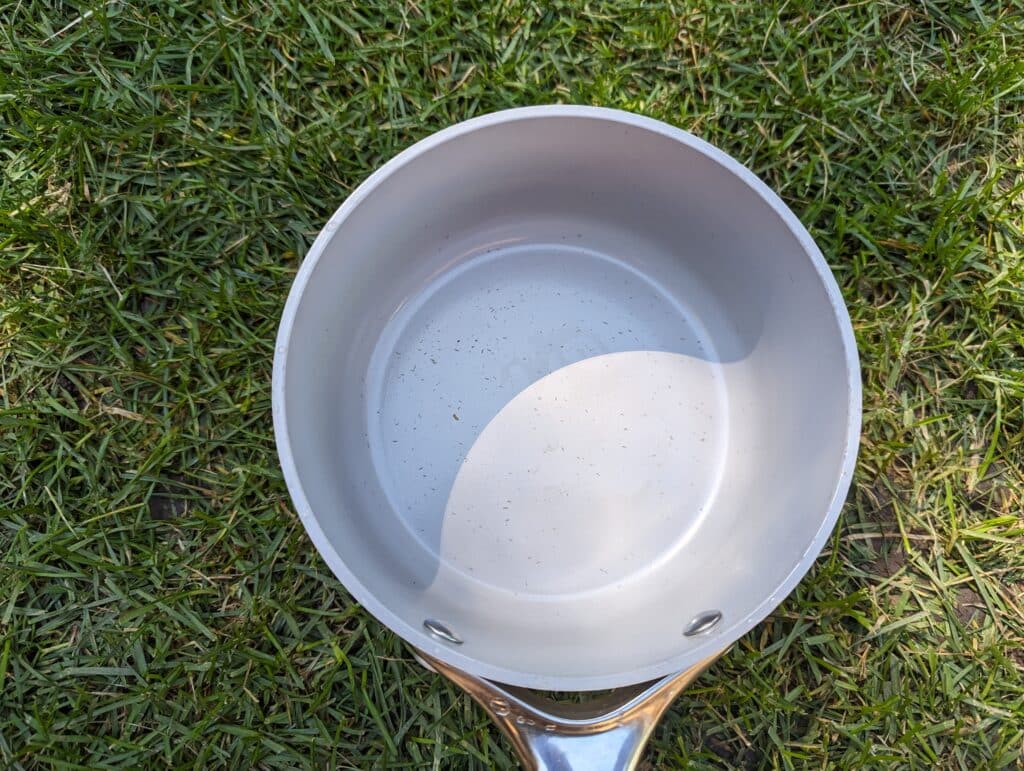
Sustainability
Hexclad pots and pans used to be made with toxic forever chemicals. This presents safety concerns during manufacturing, use, and disposal. You can’t easily recycle these pans and they’re much less durable than cast iron, stainless steel, and carbon steel, though arguably more durable than Caraway’s pans, which aren’t 3-ply.
Overall, PTFE Hexclad is not a sustainable or non-toxic cookware option.
The reissued Hexclad with ceramic coating is also unsustainable, even though we applaud Hexclad for finally ditching the PTFE. Ceramic coatings wear away, and with poor guidance on care and use from Hexclad, it seems likely customers with the newer pans will get years of use from them (despite that misleading Lifetime Warranty).
Caraway Home cookware is made with some recycled materials and can be recycled at end-of-life. Because the company doesn’t use PTFE or other forever chemicals, nor any hard anodized aluminum, there are fewer manufacturing concerns or safety concerns during use or at end of life.
Neither Caraway Home nor Hexclad have any significant sustainability initiatives. However, Caraway Home uses entirely reusable and recyclable packaging and helps customers find a recycling depot or donation center for old cookware.
Hexclad doesn’t even mention sustainability on the company website, and appears not to care about making its production processes or final products green.
Third-party testing availability
Caraway Home offers access to its third-party test reports for all of its cookware. This goes beyond just leach testing and includes tests for the presence of PTFE, lead and cadmium in the actual surface coating material. It passes all tests admirably.
Hexclad offers no such third-party testing and even though the newer pans are technically made without PTFE, we still have no idea what goes into the ceramic coating.
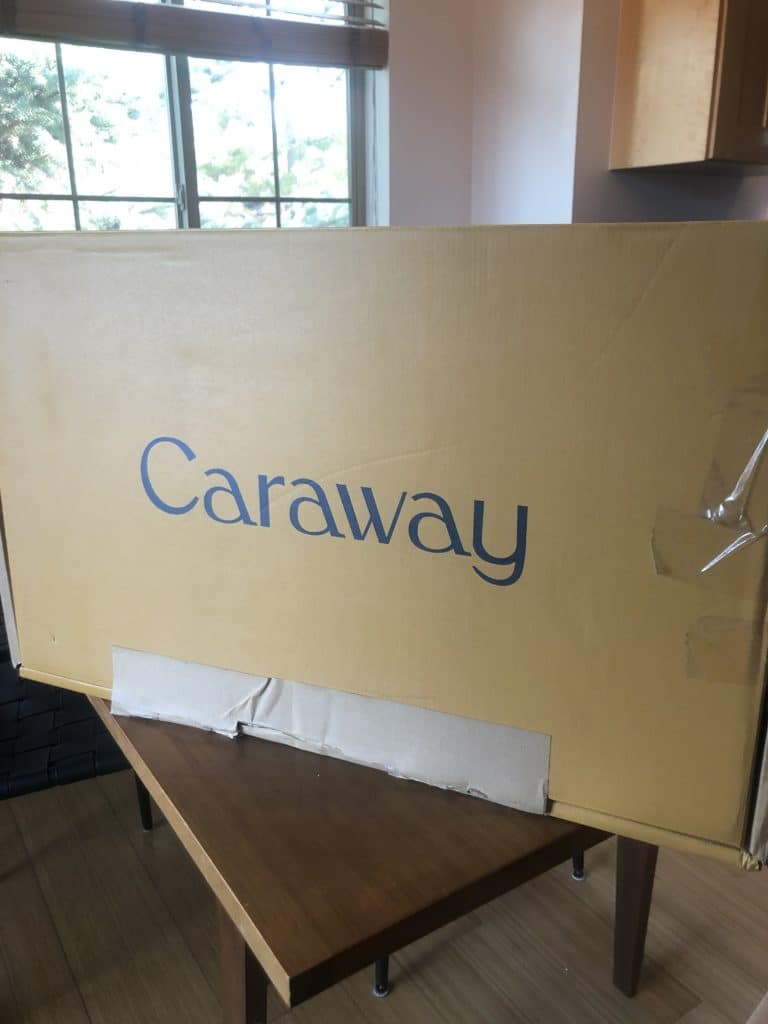
Final thoughts on Caraway vs. Hexclad
The choice between Caraway Home and Hexclad used to be clear. Now, it’s a little muddier.
Prior to Hexclad’s switch the ceramic coatings in 2024, it was easy to write off Hexclad pans as a PTFE forever chemical toxic no-go.
These days, we still favor Caraway Home, but only just.
Hexclad pans are more robustly constructed than Caraway and despite now having a ceramic coating, are still likely to fare better under more vigorous use.
The trouble is that Hexclad is woefully lacking in transparency about its materials and processes. We have no test results to determine toxicity, and Hexclad didn’t even bother to inform consumers when it quietly replaced the PTFE pans with ceramic.
All in all, while Caraway Home wins this bout, my top choices for cookware remain Made In CeramiClad (see our review – new complete set coming in Jan 2025!) and Alva (see our review).
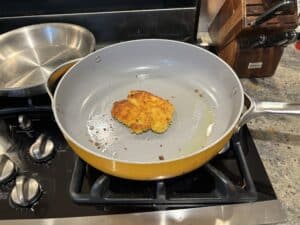
Caraway Cookware
Highlights: Non-toxic, non-stick, LeafScore tried and tested cookware. Works with induction, gas, and electric stovetops, is oven-safe, easy to clean, and very easy on the eyes – available in nearly a dozen color options!